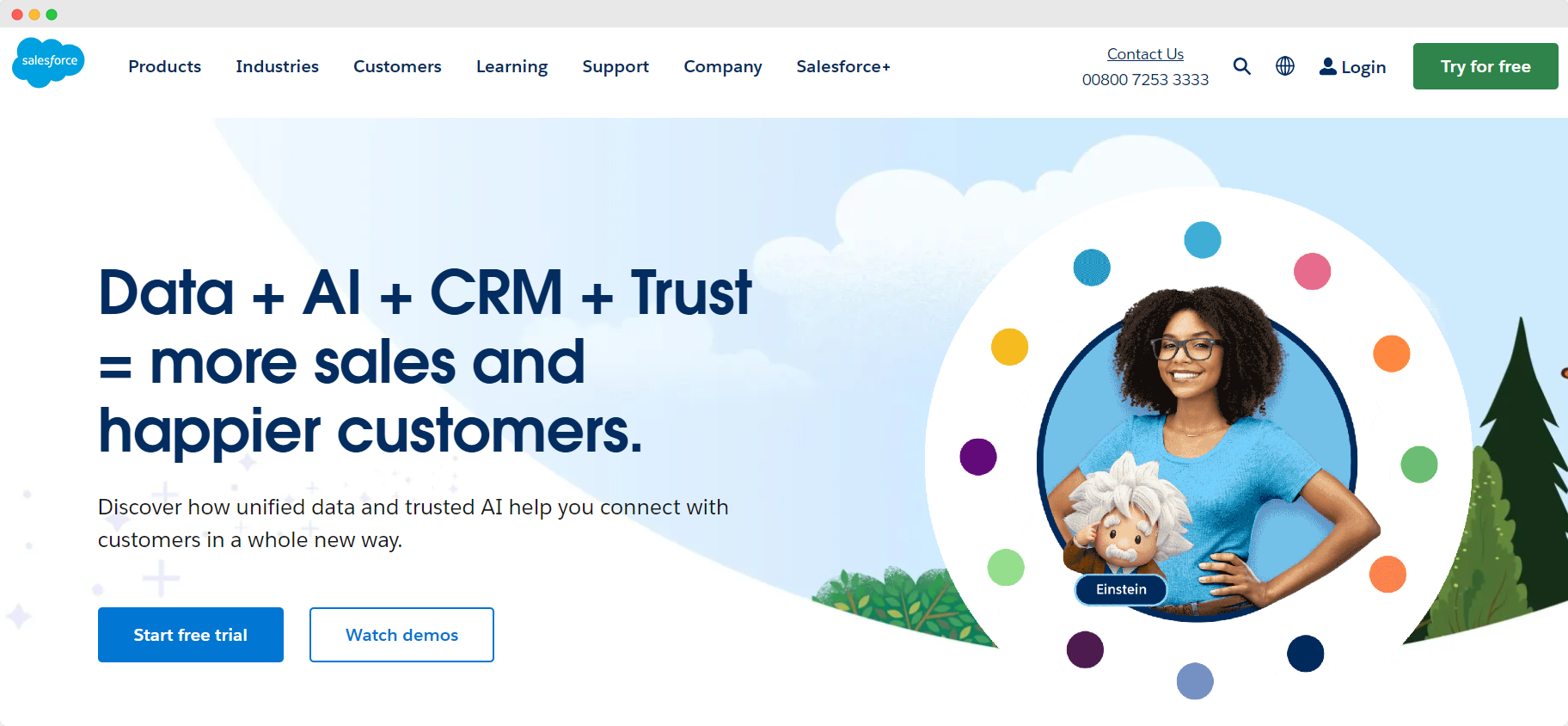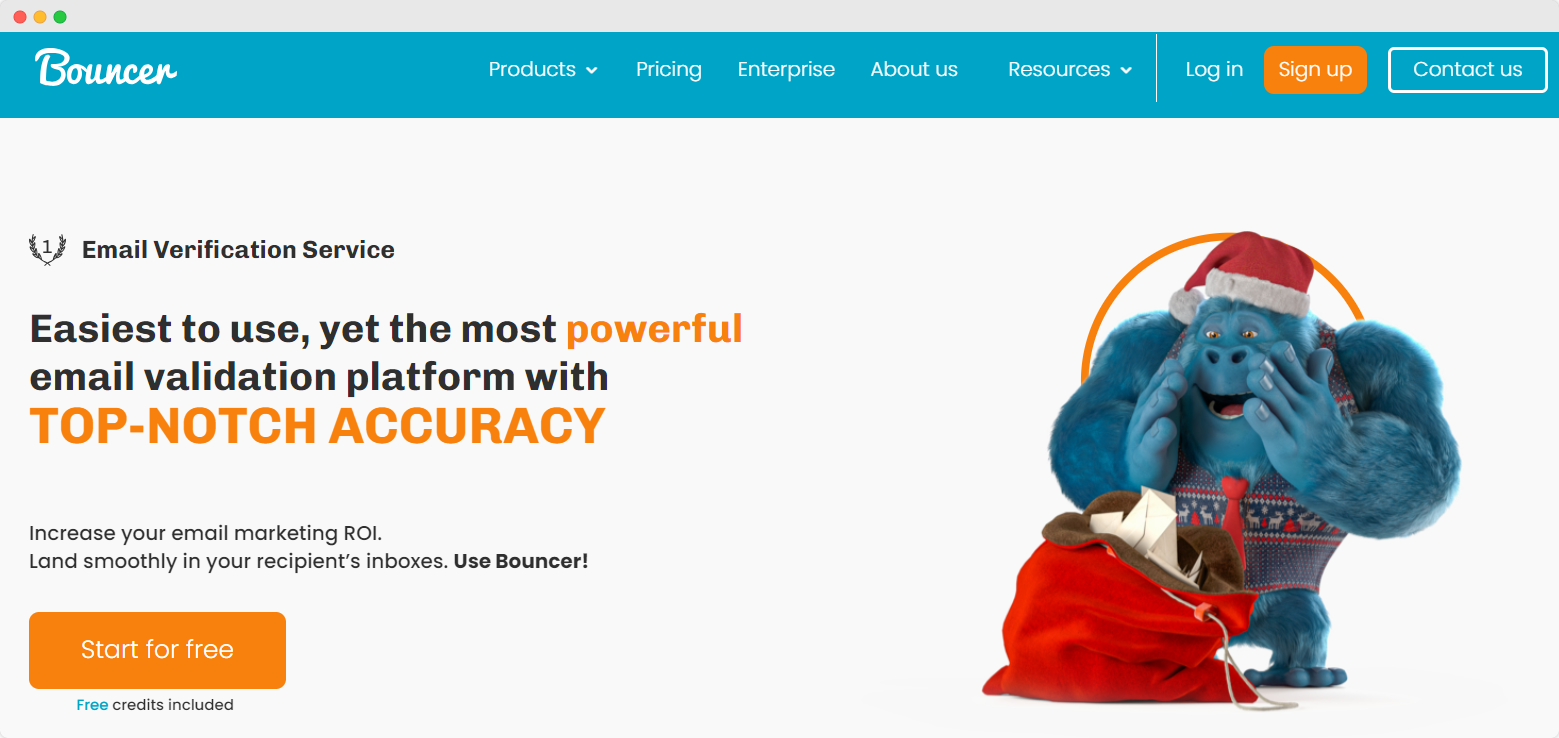If you’re a Salesforce user, successful email campaigns are probably quite important for your overall marketing and sales.
But sometimes, your emails might not reach the people they’re meant for.
This can be a big problem for your business and client communications, as many outbound emails will be stuck.
Don’t worry, though.
We’re here to help you out with our guide on improving your email deliverability on this platform.
We’ll give you easy and useful tips to make sure your emails get to the right place and have a strong impact.
Whether you’re new to Salesforce or have been using it for a while, our advice will help you send emails better and more confidently.
Let’s make your email game stronger together.
What is email deliverability in Salesforce?

Email deliverability in Salesforce is making sure that the email messages you send get to your recipients’ inboxes when they go out from your email domains.
This involves navigating through various challenges like spam filters, which can block or redirect emails they deem suspicious.
The effectiveness of deliverability also depends on the reputation of the sender’s IP addresses, as this influences how internet service providers (ISPs) treat your emails.
ISPs play a crucial role in email delivery. That’s because they can determine whether your emails should be delivered to the inbox, sent to the spam folder, or blocked entirely.
So, in Salesforce, managing email deliverability effectively means paying attention to these factors to make sure your messages reach their intended destination.
Why does it matter?
Email deliverability matters a lot, especially when you’re running email campaigns. You can avoid spam filters, increase the ROI of your campaigns and reach the people you want to talk to.
Here’s why it matters:
- Reaching subscribers’ inboxes
The main goal of sending email messages, especially in email campaigns, is to make sure they land in your subscribers’ inboxes. If your emails don’t reach the inbox, your subscribers won’t see them. The result? Your campaign won’t be effective.
- Avoiding spam filters
Spam filters are there to stop unwanted emails from reaching people. But sometimes, they can mistakenly catch your legitimate emails. This is a problem because if your emails are consistently caught by spam filters, your audience won’t see them. And this can hurt the success of your email marketing campaigns.
- Maintaining a good sending reputation
Your sender reputation is your email’s credit score. If you send emails that people want and engage with, ISPs see you as a good sender. But if you send emails that end up in spam or are often ignored, your reputation can drop. A bad reputation can lead to more of your emails being filtered out by spam filters.
- Ensuring system email efficiency
System emails are automated emails sent by systems like Salesforce. These are key for things like confirming a subscription or resetting a password. Good email deliverability makes these system emails reliably reach your users. This is absolutely essential for a smooth user experience.
Factors that influence email deliverability in Salesforce

In Salesforce, a few different factors influence email deliverability.
Understanding these can help in making sure your emails reach their destination:
Sender reputation
This is a score that measures how trustworthy your emails are. If you consistently send good emails that people open and engage with, your sender’s reputation goes up. Salesforce tracks this, and a high reputation helps your emails get through to inboxes.
Domain reputation
Similar to the reputation of a sender, but it’s about your website’s domain.
If emails from your domain are often marked as spam, it gets a bad reputation. Salesforce considers this when sending your emails, as a good domain reputation helps in better deliverability.
Sender authentication
This is about proving that your emails are actually from you. Salesforce uses things like sender policy framework (SPF) and domain-based message authentication (DMARC) to authenticate your emails. This is like showing an ID to prove your identity. Ultimately, it helps email providers trust your emails.
Email segmentation
In Salesforce, especially in the Marketing Cloud, email segmentation means sending emails to targeted groups of people. Thanks to sending relevant emails to the right people, you can improve engagement and maintain a good sender reputation.
Email hygiene
This is related to keeping your email list clean. It involves removing inactive or uninterested subscribers and correcting invalid email addresses. In Salesforce, good email hygiene means your emails are more likely to be welcomed, which boosts deliverability.
Email content
The actual content of your emails matters a lot. Emails that look like spam or have spammy content can trigger spam filters. Salesforce helps by providing email deliverability settings that can guide you in creating content that’s more likely to reach the inbox.
How to improve email deliverability in Salesforce

Improving email deliverability in Salesforce is key to making sure your marketing emails effectively reach your audience.
Here are some steps you can take:
Verify that your email server can send emails
This is the first step. Make sure your Salesforce setup and email server are correctly configured for sending emails.
This involves proper email authentication, which proves to email providers that your emails are legitimate and should be delivered to the recipient’s inbox.
Warm up your email address first before starting with large campaigns
Before launching big campaigns, start small. Send a few emails and gradually increase the number.
This builds up your account engagement and tells email providers you’re a reliable sender.
Regularly check your domain against blacklists
Sometimes, your domain can get blacklisted, which means your emails might not reach the recipient’s inbox.
Regularly checking and maintaining clean DNS records helps prevent this.
Never purchase or rent email lists
It’s tempting but don’t do it. Using such lists can harm your sender reputation because people haven’t opted in to receive your emails, and they might mark them as spam.
Use email verification to clean up your email lists regularly
Regularly clean up your email lists to remove invalid or inactive addresses.
This helps in maintaining a good sender reputation and better account engagement.
Bouncer can help here and validate your first 100 emails entirely free.
When creating email content, beware of spam trigger words
The subject line and content of your email matter a lot.
Avoid spam trigger words that might cause your email to be filtered out. Craft your content in a way that’s engaging and relevant to your audience.
Use double opt-in for new email addresses
A double opt-in means when someone signs up for your emails, they receive a confirmation email to verify their address.
It helps to make sure that your marketing emails are sent to people who want them.
Add an unsubscribe link to your emails and make it visible
Check whether every email has a visible unsubscribe link. This is not only good practice but also required by law in many places.
It shows that you respect the recipient’s choice and helps maintain email list hygiene.
Thanks to following these steps in Salesforce, you can greatly improve the chances of your marketing emails landing in the right place – the inbox.
Better Salesforce alternative

For those seeking an alternative to Salesforce for email deliverability, Bouncer is a noteworthy option.
Bouncer specializes in email verification and list cleaning services.
We offer advanced features for verifying email addresses in real time. As such, we make sure that your email lists are free of invalid or inactive addresses.
This contributes significantly to maintaining a high sender reputation and enhancing overall email deliverability.
Bouncer’s user-friendly interface and integration capabilities make it an excellent choice for businesses looking to optimize their email marketing campaigns efficiently.
Thanks to prioritizing the quality of your email lists, Bouncer helps reduce bounce rates and improve the effectiveness of your email communication.
Bouncer’s products include:
- email verification together with email verification API,
- integrations,
- Toxicity Check features,
Bouncer’s Deliverability Kit.
Why you should choose Bouncer to improve your email deliverability?
Bouncer is an amazing addon to Salesforce. If you’ve already invested time and money into building a great list of contacts, it’s crucial to make sure they receive your emails
Here are some key reasons to add Bouncer to your Salesforce account:
- Specialized email verification – Bouncer focuses specifically on email verification and list cleaning. We offer a more specialized service compared to just checking Salesforce to find out what is wrong.
- Advanced list cleaning tools – we provide tools for deeply verifying catch-all email addresses and identifying toxic emails.
- High-speed and accuracy – we boast high coverage, speed, and accuracy in email verification.
- User-friendly interface – our solution is known for its easy-to-use interface – we are accessible to users of all skill levels.
- Real-time and bulk email verification API – get ready for an ultrafast and easy-to-integrate email verification API.
- Enhanced deliverability features – you can expect features like inbox placement testing, authentication verification, and blocklist monitoring – all important for improving email deliverability.
- GDPR compliance and data security – we are fully GDPR compliant and place a high emphasis on data security.
- High customer satisfaction – with a user rating of 4.8 based on over 300 reviews, Bouncer is well-received by its user base.
- Premium support – we always deliver premium support to all our customers.
- Integration with popular marketing platforms – seamless integration with popular marketing platforms is nothing strange to us.
- Cost-effective with free testing credits – Bouncer offers free credits for testing its services.
- Custom solutions for different business sizes – whether you’re a small business or a large enterprise, we tailor our solutions to meet your diverse needs.
These features make Bouncer a compelling choice for businesses focusing on improving their email deliverability and maintaining high-quality email lists.
Conclusion
Mastering email deliverability in Salesforce is essential for the success of your email marketing efforts – you got that right.
Thanks to our tips, you now know how to nail it. You’re welcome.
Ultimately, your goal is pretty clear: making sure your emails are not only sent but also seen and engaged with by your audience.
This is why we also suggest considering an alternative solution – Bouncer.
If your focus is on email verification and list cleanliness, Bouncer offers a powerful and user-friendly solution. Grab it today and validate your first 100 emails for free!


